
Alcohol is :
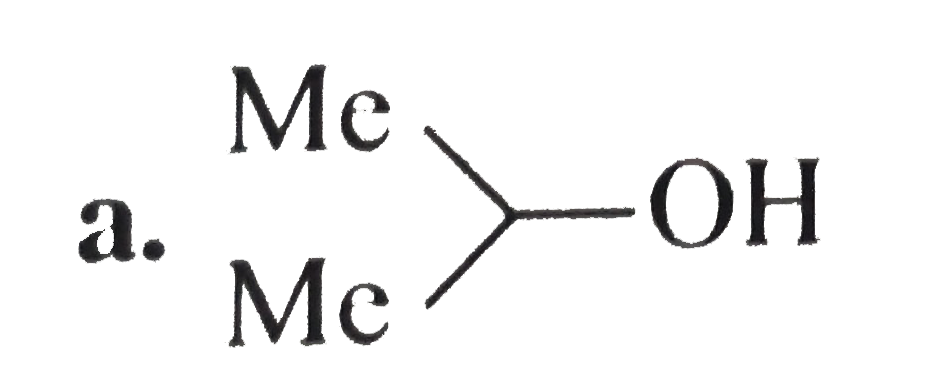
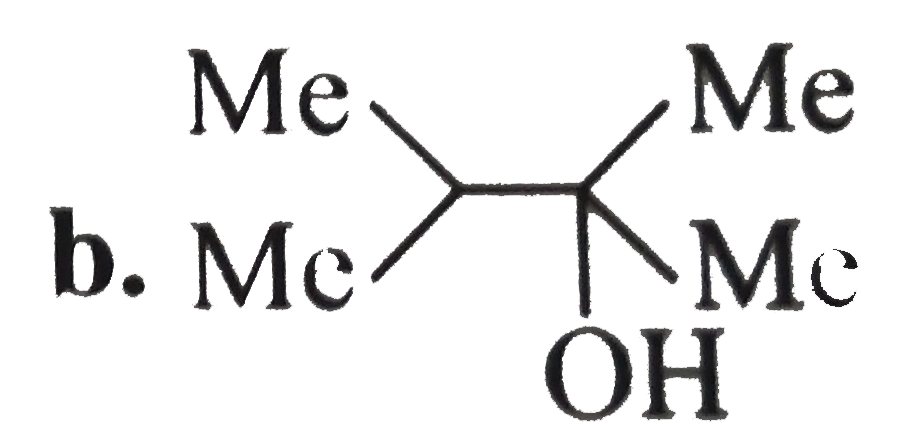


The correct Answer is:B
(b) (i) Acetone obtained from suggests that is calcium acetate, .
(ii) Therefore, compound is acetone
(iii) Thus, compound would be isopropyl alcohol .
(iv) Since is obtained from would be 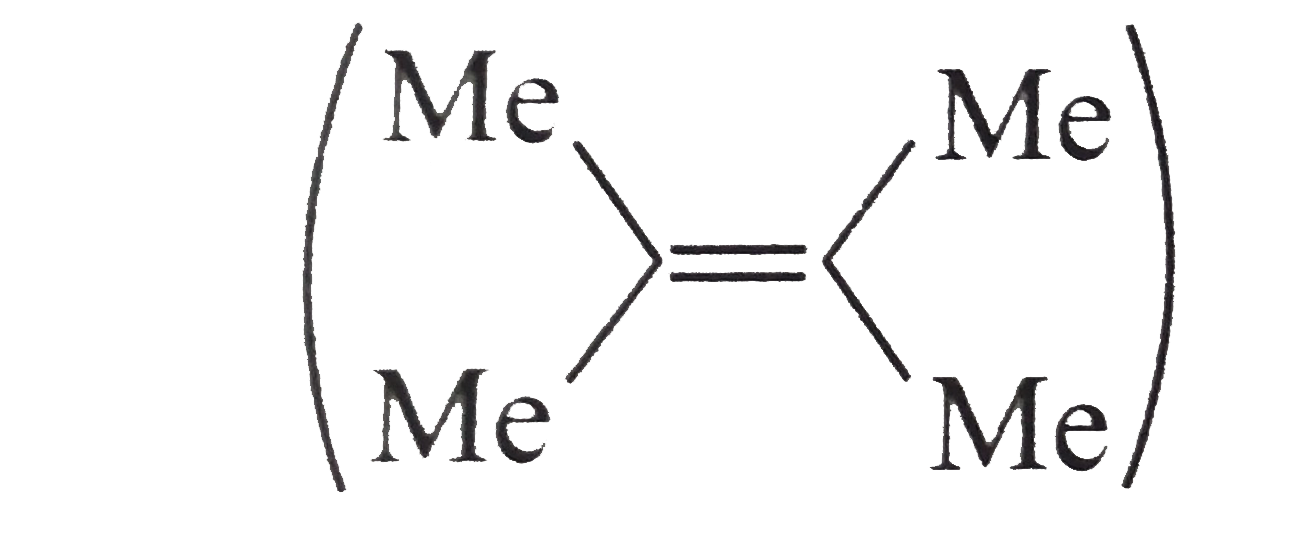
(v) (B) would be 
(vi) Structure of and suggest that ester should be  .
.
Reactions :
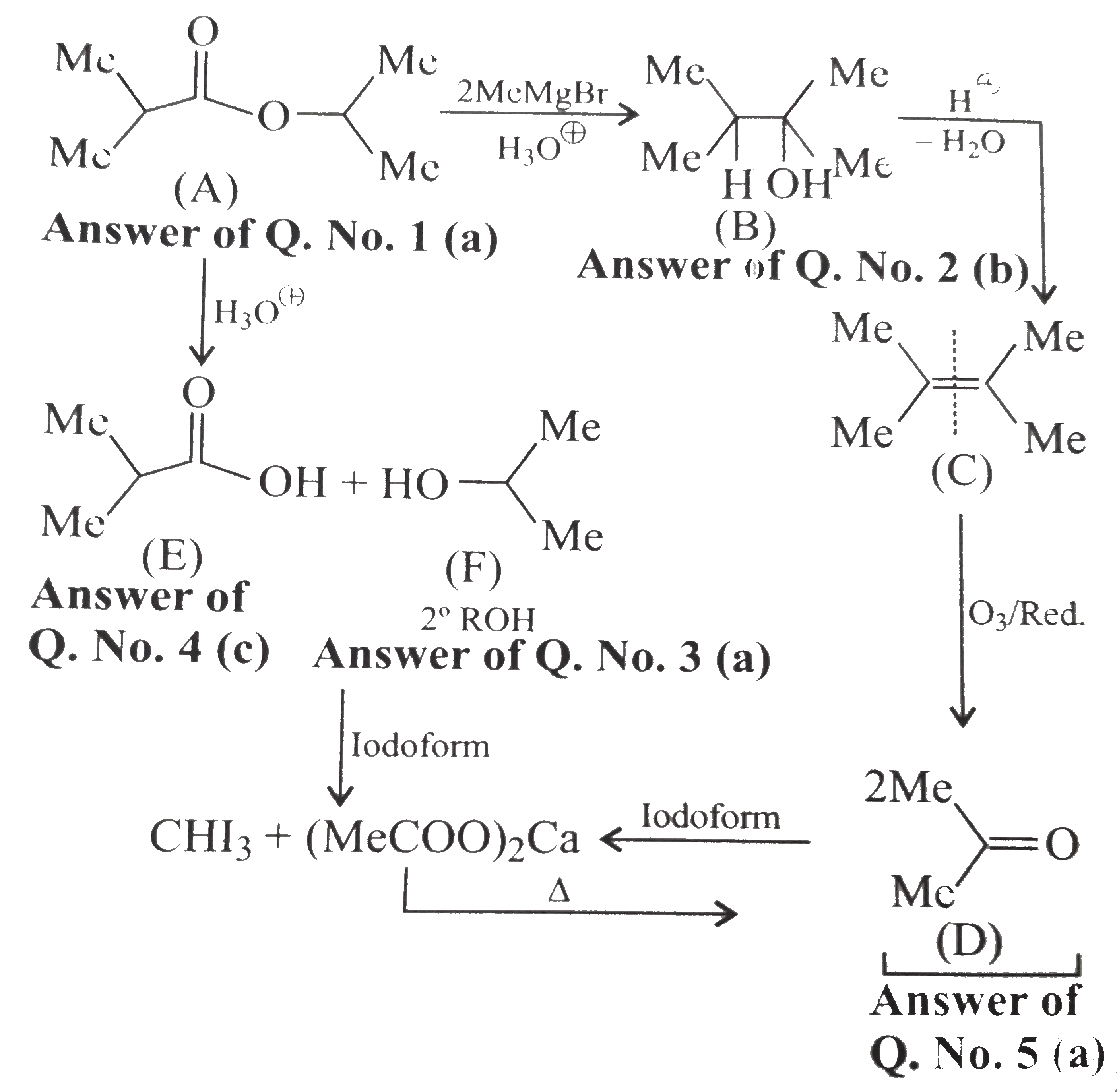 .
.
Topper's Solved these Questions
- BOOK - CENGAGE CHEMISTRYCHAPTER - CARBOXYLIC ACIDS AND THEIR DERIVATIVESEXERCISE - Exercises (Multiple Correct)35videos
CARBOXYLIC ACIDS AND THEIR DERIVATIVES
- BOOK - CENGAGE CHEMISTRYCHAPTER - CARBOXYLIC ACIDS AND THEIR DERIVATIVESEXERCISE - Exercises (Singlecorrect)64videos
CARBOXYLIC ACIDS AND THEIR DERIVATIVES
- BOOK - CENGAGE CHEMISTRYCHAPTER - CARBOXYLIC ACIDS AND THEIR DERIVATIVESEXERCISE - Exercises (Subjective)19videos
CARBOXYLIC ACIDS AND THEIR DERIVATIVES
- BOOK - CENGAGE CHEMISTRYCHAPTER - BIOMOLECULES, POLYMERS AND CHEMISTRY IN EVERYDAY LIFEEXERCISE - QUESTION BANK8videos
BIOMOLECULES, POLYMERS AND CHEMISTRY IN EVERYDAY LIFE
- BOOK - CENGAGE CHEMISTRYCHAPTER - CHEMICAL KINETICSEXERCISE - Archives Subjective23videos
CHEMICAL KINETICS
Similar Questions
A neutral liquid of formula C7H14O2 is hydrolysed to an acid (A), and an alcohol (B). Acid (A) has a neutralization equivalent of 74. Alcohol (B) is not oxidized with an acid solution of Na2Cr2O7. What is the formula and name of the original compound?
View SolutionA neutral liquid of fromual C7H14O2 is hydrolysed to an acid (A) and an alcohol (B). Acid (A) has neutraliztion equivalent of 84 . Alchohol (B) is not easily oxidized with an acid solution of Na2Cr2O7 . What is the structure fo the original compound ?
View Solution
Knowledge Check
- Question 1 - Select One
Identify the following disproportionation reaction.
I. 2H−D∣C=O+ΘOH→Acid salt (A) + alcohol (B)
II. 2D−D∣C=O+ΘOH→Acid salt(C)+alcohol (D)A(A)(B)(C)(D)D−O∣∣C−OΘCH2DOHD−O∣∣C−OΘCH2DOHB(A)(B)(C)(D)H−O∣∣C−OΘCH3OHH−O∣∣C−OΘCH2DOHC(A)(B)(C)(D)H−O∣∣C−OΘCH2DOHD−O∣∣C−OΘCH2DOHD(A)(B)(C)(D)D−O∣∣C−OΘCH2DOHD−O∣∣C−OΘCD3OH - Question 2 - Select One
Given below are the steps to be followed for performing 'starch test' on a green leaf.
(A) Boil the leaf in alcohol (B) Boil the leaf in water
(C)Dip the leaf in iodine solution (D) Wash the leaf in water
Which one of the following sequences should the students follow to get the correct result?A(A),(D),(B),(C)B(D),(A),(B),(C)C(B),(D),(A),(C)D(B),(A),(D),(C) - Question 3 - Select One
hydrolysis of an ester given acid A and alcohol B gives A. The ester is
AMethyl formateBEthyl formateCMethyl acetateDEthyl acetate
An ester C4H8O2 (A) on treatment with excess of methyl magneium chloride followed by acidification gives an alcohol (B) as the sole organic product. Alcohol (B), on oxidation with NaOCl followed by acidification gives acetic acid. Deduce the structures of (A) and (B) and show the reactions involved .
View SolutionAn ester (A) (C4H8O2) , on treatment with excess methyl magnesium chloride followed by acidification, gives an alcohol (B) as the sole organic product. Alcohol (B), on oxidation with NaOCI followed by acidification gives acetic acid. Deduce the structures of (A) and (B). show the reactions involved.
View SolutionCyclopentyl bromide on treatment with magnesium in dry ether forms an organometallic compound (A). The organometallic compound reacts with ethanal to give an alcohol (B) after mild hydrolysis. Prolonged treatment of alcohol (B) with an equivalent amount of HBr gives 1-bromo-1- methylcyclohexane (C). Write the structure of (A), (B) and explain how (C) is obtained from (B)?
View SolutionComplete the following:
i. Give the oxidation product of
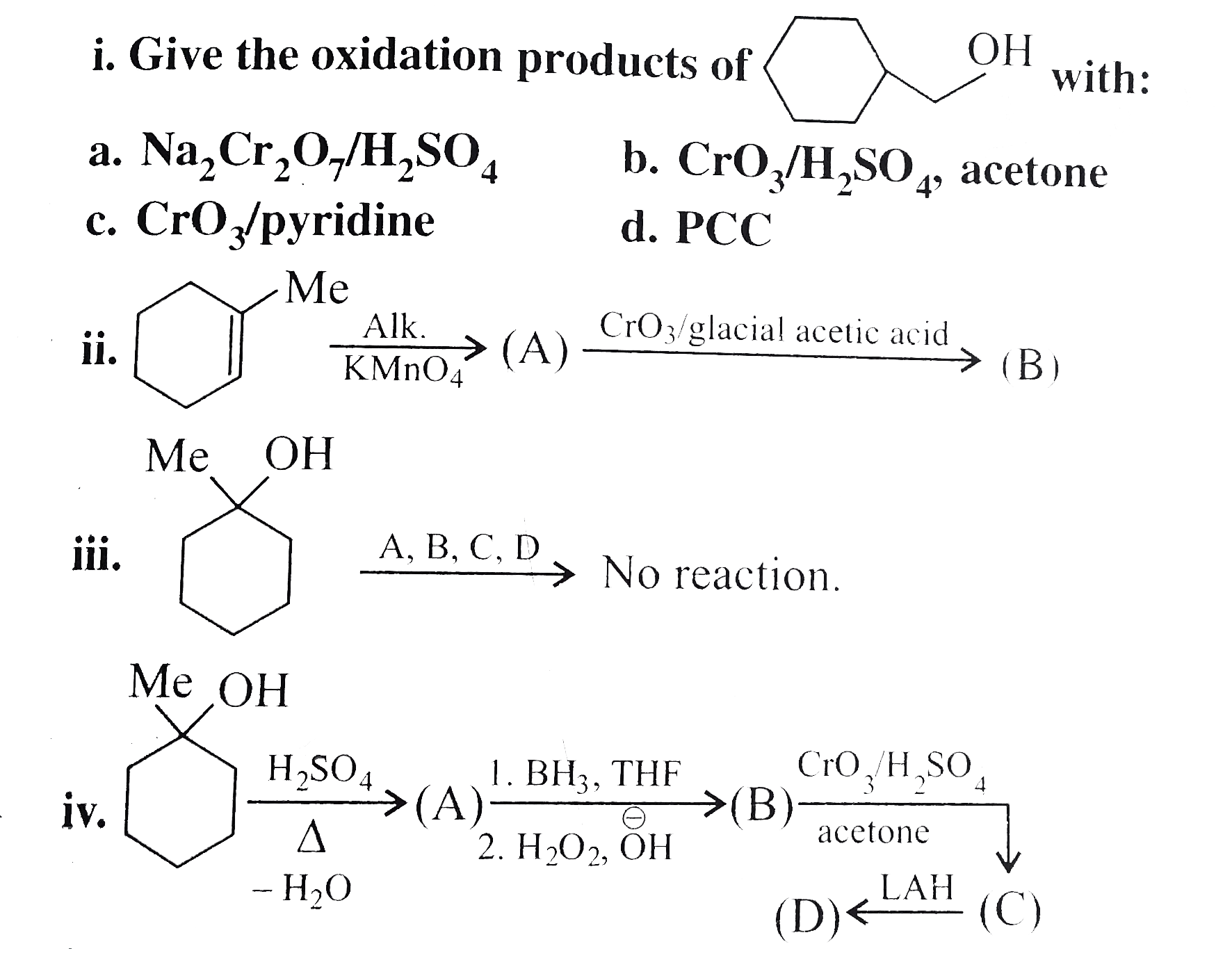
v. Distinguish between allyl alcohol (A) and n-propyl alcohol (B).
vi. Complete the following:

c. CH3CHO+HC≡CDCH3ONa−−−−−→(A)
d.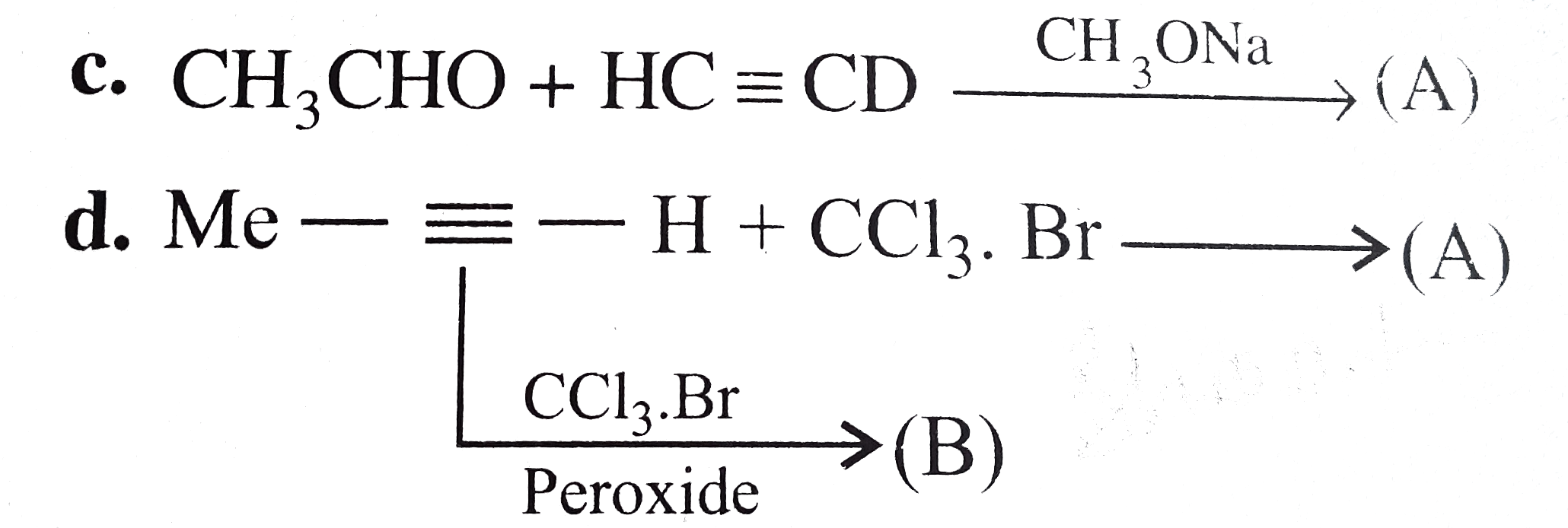
vii. Write the stereochmical products of the following:
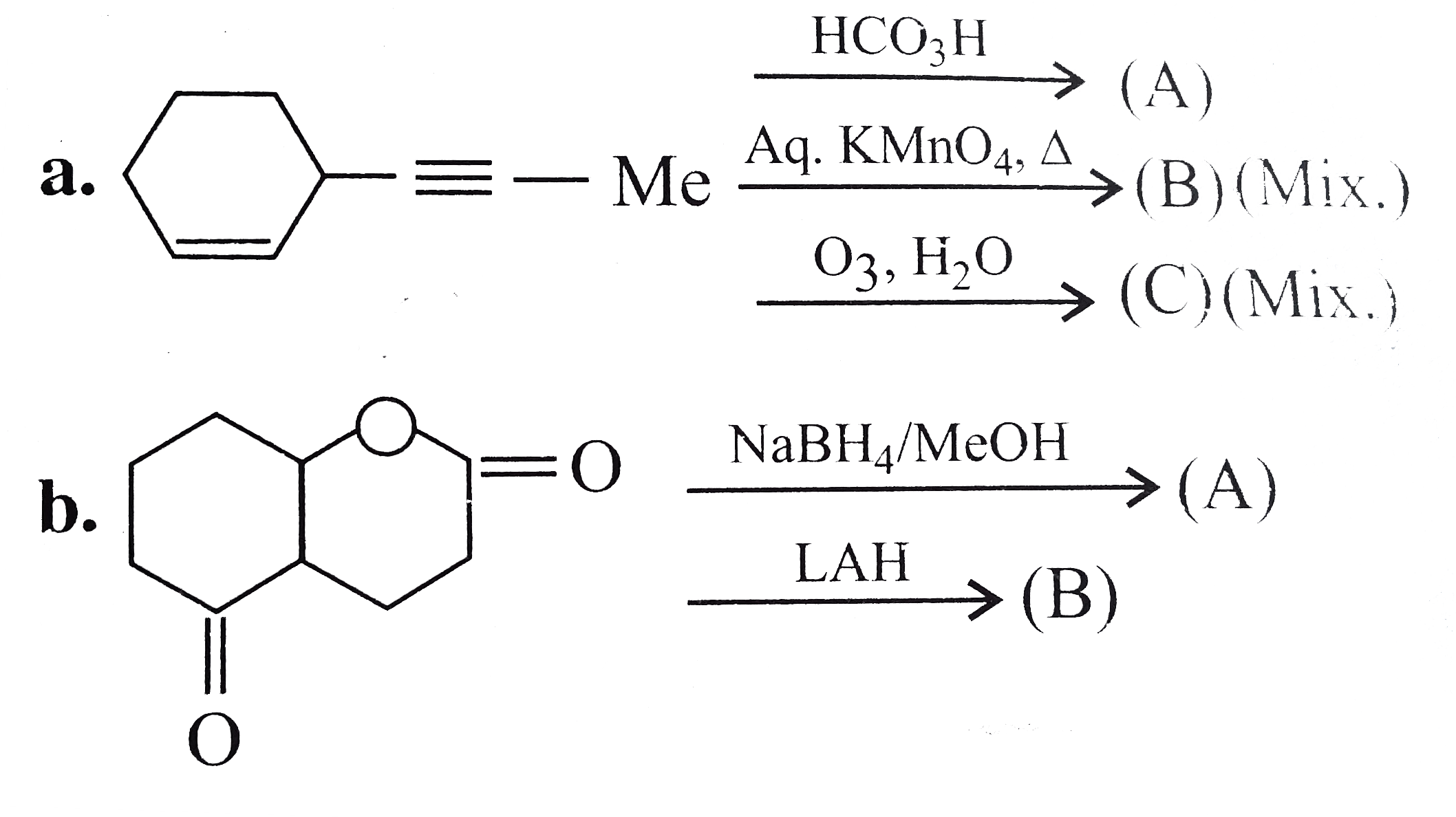 View Solution
View SolutionWhich of the following alcohols is unable to turn orange colour of chromic acid green ?
View Solution

